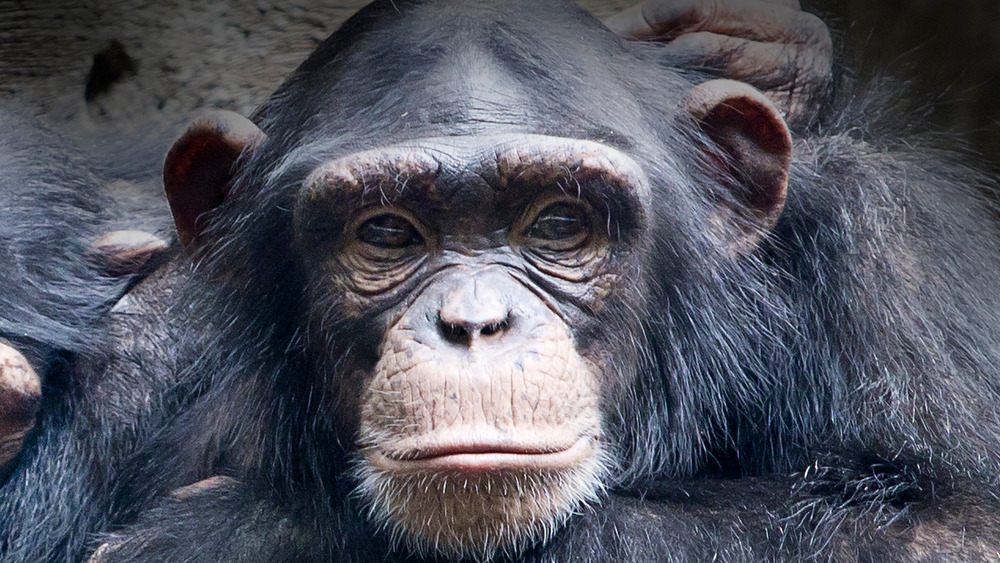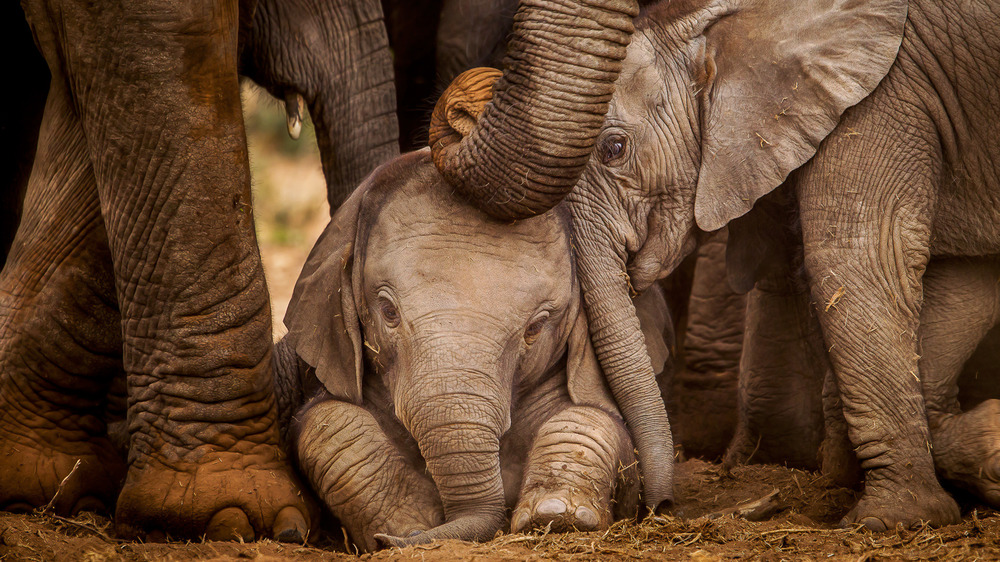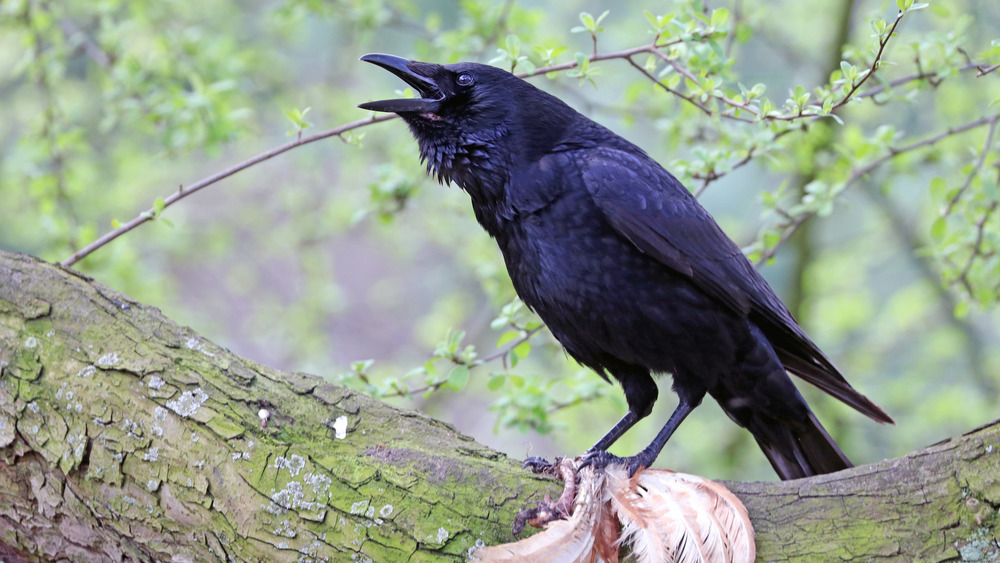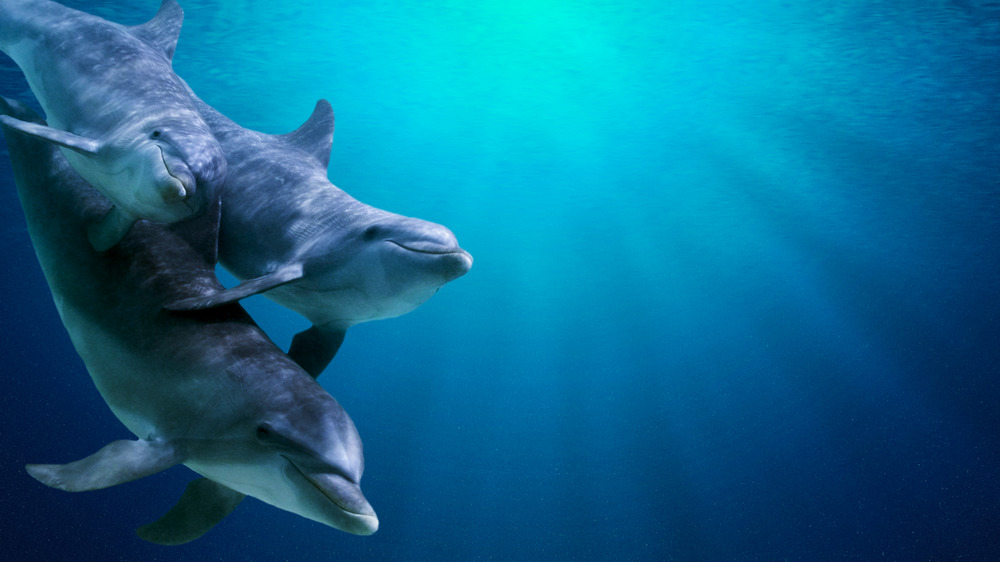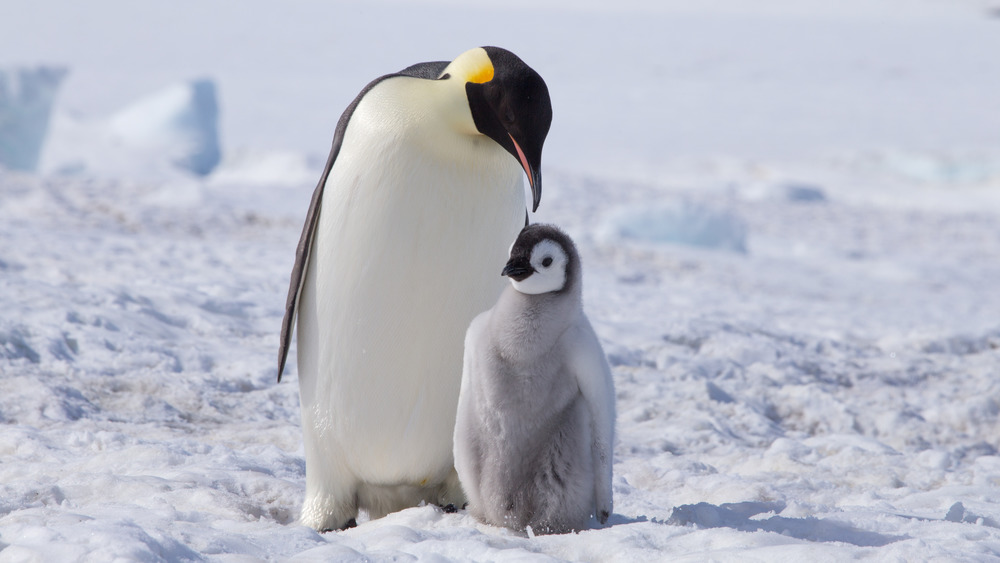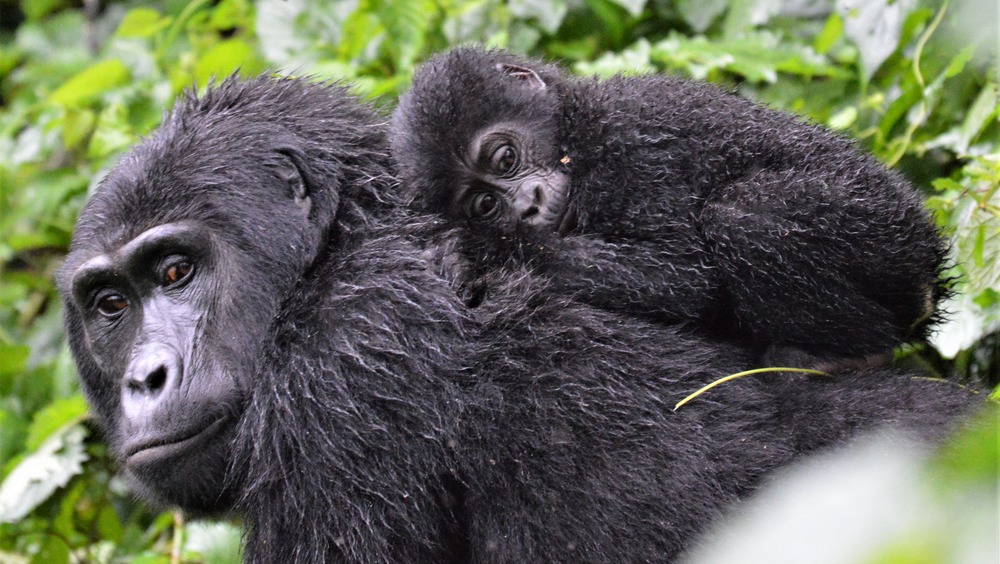The Untold Truth Of Animal Funerals And Death Rituals
Death is neither the purpose nor defining feature of life, but its inevitability does define many of our choices. After all, time is limited. Master the saxophone or piano? Study marketing or theater? Buy a home, or rent (until it's time to join an elderly care facility)? Plenty of choices are non-exclusive, and even though the choice to die isn't, how we commemorate it and cope with it is.
Ancient Egyptians mummified their dead to ensure the soul could successfully journey to the afterlife (per the Smithsonian). Certain Buddhists, such as those of Japan's Shingon sect, once attempted to bypass the transition to death altogether by self-mummifying while still alive (per the Japan Times). Some cultures bury their dead, while the world over, more and more are opting for cremation (per Urns Online). Throughout time, billions have mourned, grieved, and contemplated the afterlife.
But how about non-human animals? "Comparative thanatology" is the discipline that investigates death responses among non-human animals, who, like us, bond with friends and mates, derive pleasure from a full life, and feel pain when a loved one passes. This is not "humanizing" animals. It is, in the words of Homo Deus author Yuval Noah Harari, "mammalizing" us. A pig doesn't scribble down general relativity equations, but only human hubris would assume that a pig's inner world is mere neurochemical chaff, and its behaviors simply reflexes of biological purveyance.
Elephants conduct death rites and visit their deceased
For decades, researchers have noted exactly how intelligent, emotionally complex, and social elephants are. As the University of New Hampshire outlines, elephants hang out in family clusters of 12 or more, centered around a matriarch. They play, frolic, chase, wrestle, engage in gentle touching — especially from mother to offspring — and bond for life. Friends separated are usually ecstatic when they're reunited, and despondent when apart.
When it comes to their dead, elephants display tremendous curiosity and reverence. It's rare for researchers to come across a dead elephant, let alone come across other elephants around a dead elephant. But as National Geographic shows, citing a singular opportunity to witness elephant death rites in 2013, elephants circle around their dead and stay silent. They investigate with their trunks, raise their feet, and occasionally bellow towards the sky. They'll return to spots where the dead lay, even weeks later, or try to identify the remains of elephants that they come across while roaming, particularly bones.
It's critical to note that elephant herds generally don't stop moving throughout the day. They require enormous energy to sustain themselves, and take up to 18 hours a day to eat 200-600 pounds of food per elephant (per the National Elephant Center). Stopping and paying homage to the dead, or making the journey to a previous spot, constitutes a potentially dangerous detour that demonstrates exactly how important it is for elephants to take care of their dead.
Corvids cry out to wake the dead and warn others
Corvids, a family of birds which includes crows, ravens, and magpies, have an ancient reputation for being clever and ingenuitive. The old Aesop's fable of "The Crow and the Pitcher" (posted at Project Gutenberg) has been demonstrated to be true, as crows will displace water with objects to raise its level and fetch food otherwise out of reach (you can watch such experiments on YouTube). As National Geographic says, they make their own tools and plan ahead to solve problems. They even chuck nuts on streets to let cars run them over and so crack them open, as PBS reports.
Researcher Kaeli Swift, as catalogued on her blog Corvid Research, has done a tremendous amount of work in recent years drawing attention to the death rites of corvids. Oftentimes, such as the magpies in this video on YouTube, they encircle their dead and cry out as if to "wake" them (kind of like a human "wake," to ensure the deceased is truly deceased). Or, as Dr. Swift says in this TED Talk on YouTube, they place sticks, gum wrappers, and the like on top of a body. She conducted an experiment in which she fed crows in a park, then subsequently carried a dead crow into a park while wearing a mask. The crows recognized her on sight, mask or not, and were wary to accept food from her from then on.
Even in the Quran, a raven taught Cain to bury his murdered brother Abel.
Dolphins and orcas carry their dead for days
Marine mammals such as dolphins, orcas, and whales are known for complex social behaviors, strong group bonding, and intensely emotional behavior, to the point where captive, unhappy dolphins engage in neurotic, possibly even suicidal behaviors like slamming their heads against walls (per One Green Planet). As Scientific American summarizes, whale signals are complex and are patterned enough to essentially warrant grammar. They vary in waveform composition from whale to whale, like an individual human's voice, yet remain consistent in syntax over generations, per geographic region, like a socially-learned language.
As of 2016, as the Journal of Mammology reports, seven species of odontocetes (toothed marine mammals like dolphins, whales, orca, and so forth) had been witnessed conducting what appear to be death rites. They carry the dead on their snouts for days, particularly offspring, and as National Geographic goes on to discuss, generally stick close, as if holding vigil. Melissa Reggente, biologist at the University of Milano-Bicocca in Italy and co-author of the study, says that after she retrieved one such corpse, its caretaker dolphin remained offshore and refused to leave. Larger whales will use their mouths to convey their dead.
Much like elephants, this behavior is extremely significant. Orcas, for instance, expend tremendous energy hunting for their 375 pounds-per-day food intake, as Marine Science says. Missing out on a meal can prove fatal, which reveals exactly how important it is for such animals to tend to their dead.
Penguins bow their heads in sorrow and comfort each other
Penguins are among the most widely loved and unique birds on Earth, who swim rather than fly, and are wholly adapted to frozen weather. They're highly social, much like the other animals on this list, and as National Geographic relates, while penguins haven't been studied as much as corvids, they display many of the same behaviors. They hunt in groups, have an exceptional memory, mate for life, and per Penguin Chum, love to play, slide down snow heaps, and generally cause mischief by stealing things and pushing other penguins in the water.
Penguins lay only one or two eggs a year, and the death rites researchers have witnessed almost invariably revolve around losing a chick. Penguins often huddle together for warmth, and rotate their entire cluster to ensure that the same penguins aren't always facing windward. Accidents do happen, though. Sometimes chicks get lost, or orphaned, and in the case of a 2011 incident reported by Daily Telegraph, die by the hundreds. Parents "hunch over like they are in a state of grief and they wander around the frozen ice wastes attempting to locate their chick."
Most pointedly, BBC Earth recorded one specific incident of a mother losing a chick. The video, watchable on YouTube, shows the mother hunched over her dead, frozen chick, calling to it and trying to pull it closer for warmth. Another penguin comes over to her and essentially, what looks like, comforts her with a hug.
Gorillas, chimps, and certain monkeys groom the dead and comfort each other
Lastly, we've got our closest genetic relatives: primates. It's at least easier to identify grief in a primate because the expression so closely resembles our own. This isn't mere speculation, anthropomorphism, or projection, though. Famed interspecies ambassador Koko, the sign-language-wielding gorilla, cried over the death of her favorite kitten, as seen on YouTube, and communicated her grief directly. She was also stricken by the loss of Robin Williams (they were friends), as USA Today reports. In yet another report, National Geographic told of a mother gorilla in the wild, refusing to let go of her dead two-week-old infant while her family gathered around her and made "soft, crying noises." Newsweek reports on Jane Goodall's research regarding the chimpanzee Flint, who exhibited signs of depression after his mother's death. He refused to eat or interact with other chimps, and just stared at his mother's nest until he actually died.
When looking at specific death rites among primates, there's a lot of variation between species and tribe. Primates investigate the dead, hold vigils, and carry them to different locations. Live Science reports a chimpanzee family grooming a deceased relative and cleaning his teeth with tools. In the documentary Spy in the Wild, Langur monkeys in India encircled what they thought to be a deceased monkey (it was a stuffed animal with a camera planted by the film crew) after one of the monkeys dropped it from a tree, per BBC Earth. They encircled it, sat, and hugged each other.
